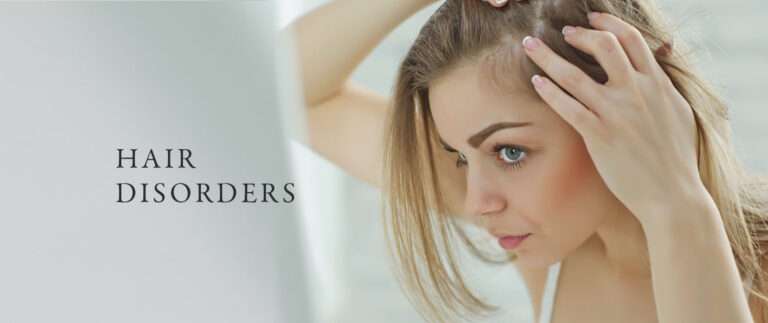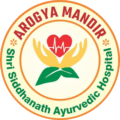Hair Disorders

To grasp the complexities of hair disorders, it is imperative to delve into the Ayurvedic perspective on hair. According to Ayurveda, hair originates from the bones of an individual. Stronger bones equate to strong hair. This notion, however, lacks resonance in modern scientific discourse.
Ayurvedic Concept of Hair –
Ayurveda tells that a portion of the bone tissue, derived from our dietary intake, contributes to the formation of hair. It further explicates that an increase in Vaat dosha, a vital energy force, results in a diminished Asthi dhatu, the power of bones. Observable in the common world, individuals who engage in excessive travel, strenuous labor, stress, or rigorous exercise often exhibit signs of hair disorders, as these factors elevate Vaat dosha in the body.
To control Vaat dosha, it requires interventions such as abhyang, a traditional oil massage. Unfortunately, modern lifestyles make it challenging to incorporate abhyang into daily routines. The current generation tends to avoid daily scalp oiling, favoring chemical-based shampoos and gels. This shift adversely impacts hair health, as adequate oiling is essential. Consequently, we unwittingly weaken our hair, inviting an imbalance in Vaat dosha, followed by an imbalance in Pitta dosha, leading to hair fall or premature graying.
Ayurvedic Insights: Need of Cold for Healthy Hair
A fundamental requirement for healthy hair is exposure to cold. Hair serves as a natural protection against cold. For example, the long and robust hair of polar bears protect from extreme cold. In same way, Camel staying in desert has very less hairs, because camel doesn’t require hair for protection from cold. Our ancestors, too, possessed abundant body hair. However, as humans adopted clothing for protection against the cold, the need for body hair diminished, resulting in its reduction.
Coldness, both external and internal, is crucial for maintaining optimal hair health. Instances abound where individuals with higher anger experience hair loss, as anger generates internal heat. Ayurveda recommends cold water baths with a tranquil mind for healthy hair. Interestingly, Ayurveda advocates cold water baths for the area above the neck and hot water baths for the area below the neck.
It is important to note that the mentioned factors may vary based on an individual’s prakruti, or constitution.
Moving forward, let’s explore the types of hair disorders according to Ayurveda.
Types of Hair Disorders in Ayurveda
Vaataj Hair Disorder: Associated with Vaat dosha.
- Dry hair
- Dandruff
- Split ends
- Curliness
- Irregular hairs
- Hair fall
- Sparse hairs
- Bala oil is recommended for this condition.
Pittaj Hair Disorders: Related to Pitta dosha.
- Warm scalp
- Rare dandruff
- Permanent hair loss
- White hairs
- Excessive sebum secretion, etc.
- Narikel oil is recommended for this condition.
Kaphaj Hair Disorders: Linked to Kapha dosha.
- Oily hairs
- Low hair loss
- Excessive hair growth
- Itching in hair
- Very little dandruff, etc.
- Bhringraj oil is recommended for this condition.
These are broad classifications, and accurate diagnosis and treatment require a thorough examination of the patient and the disease.
Therapies for Hair Disorders
- Abhyanga
- Shirodhara, Shiropichu
- Udvartan, etc.
Unique Aspects of Our Therapies at Arogya Mandir – Shri Siddhanath Ayurvedic Hospital, Miraj:
- Deep Ayurvedic examination using noninvasive tools like Ashtavidha Parikshan and Nadi Parikshan.
- Tailored therapies based on the exact pathogenesis of the disease.
- Unique features include serene therapy rooms, skilled therapists, and a positive environment.
- Prakruti and Dhatu Sarata examination before commencing therapies.
- Authentic procedures for each therapy.
- Proper use of herbal medicines and instruments during therapy.
- Specialized rooms with facilities for indoor patients.
Feel free to download and share this insightful article. For more information on available treatments, visit drchivateayurved.org/treatment-available/.
Copyright Notice: This article, authored by Dr. Prashant Chivate, is intended for informational purposes regarding diseases. All rights reserved. Any unauthorized use of this article is strictly prohibited
